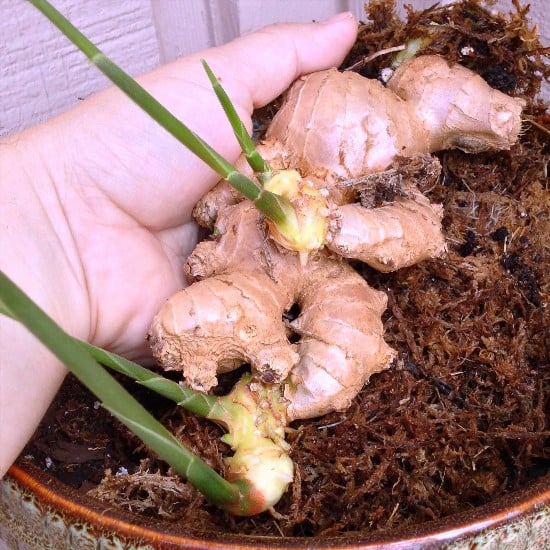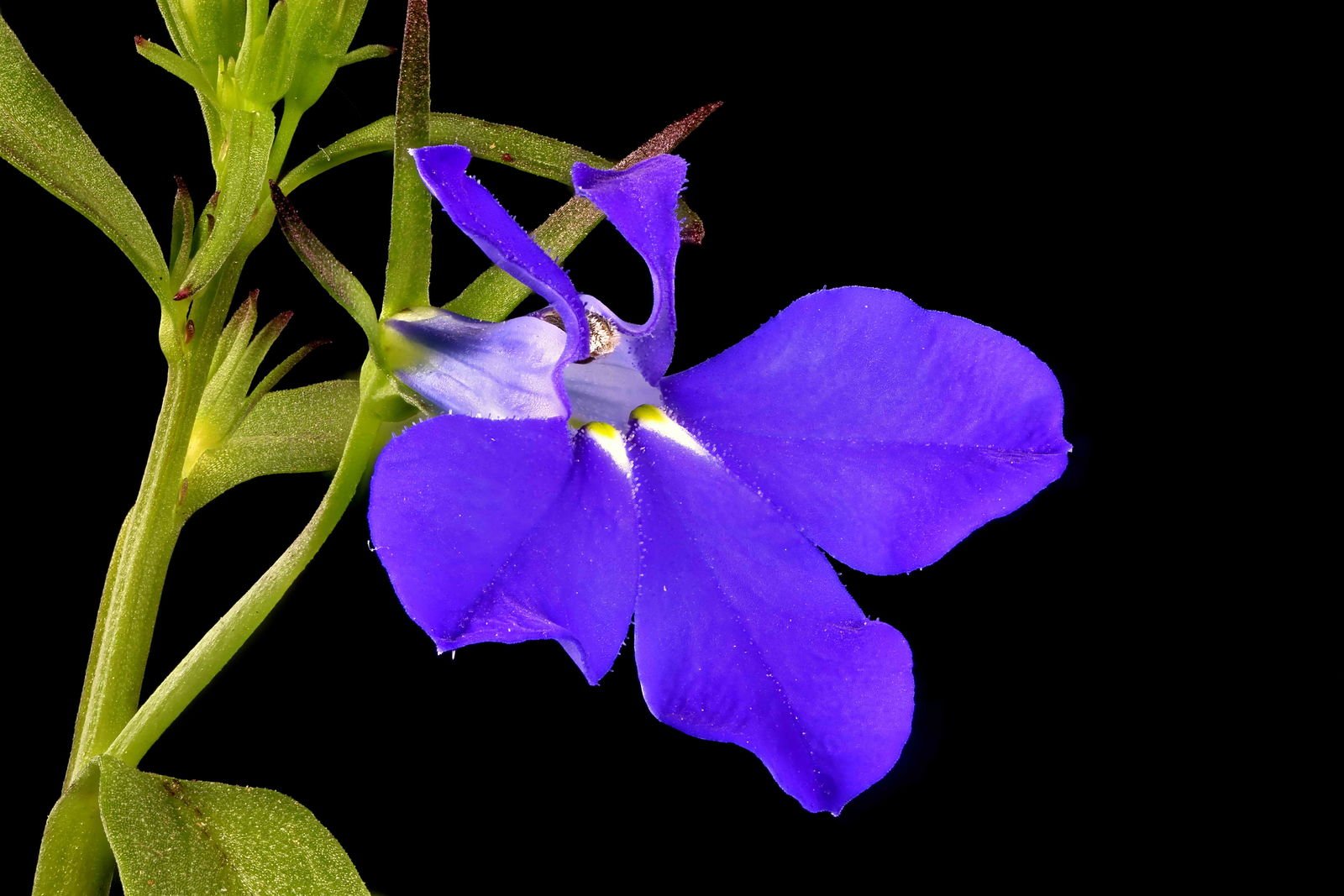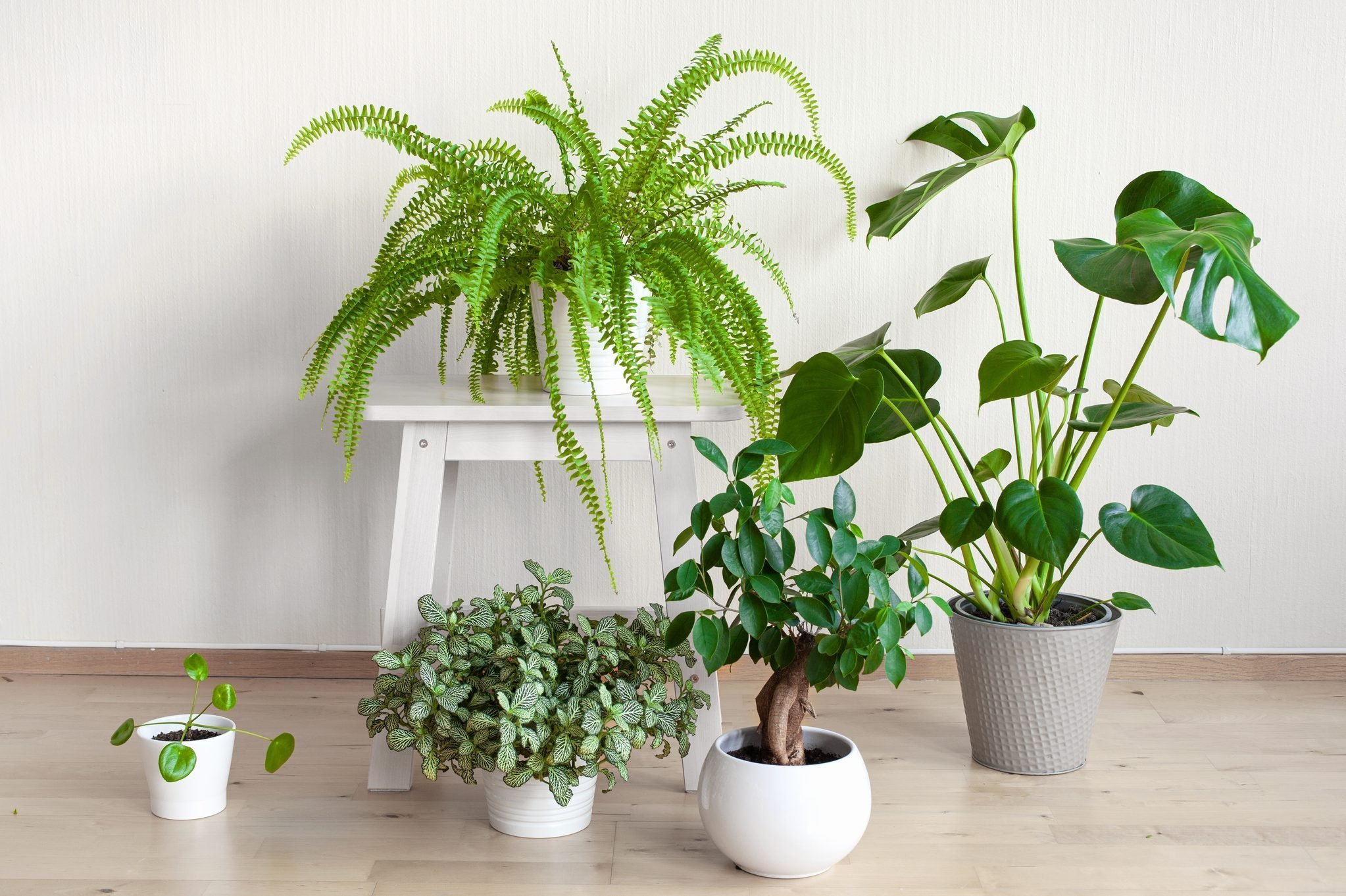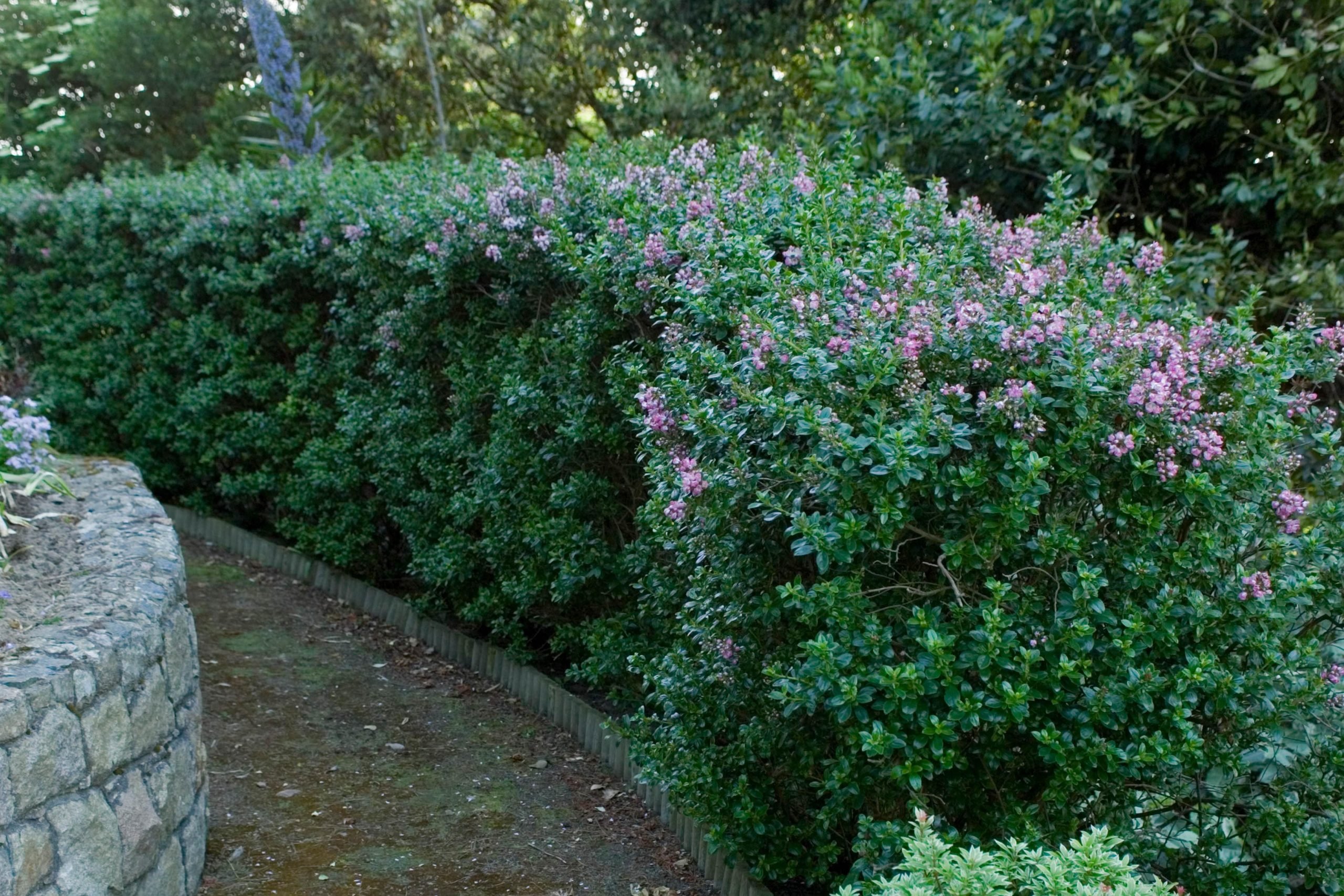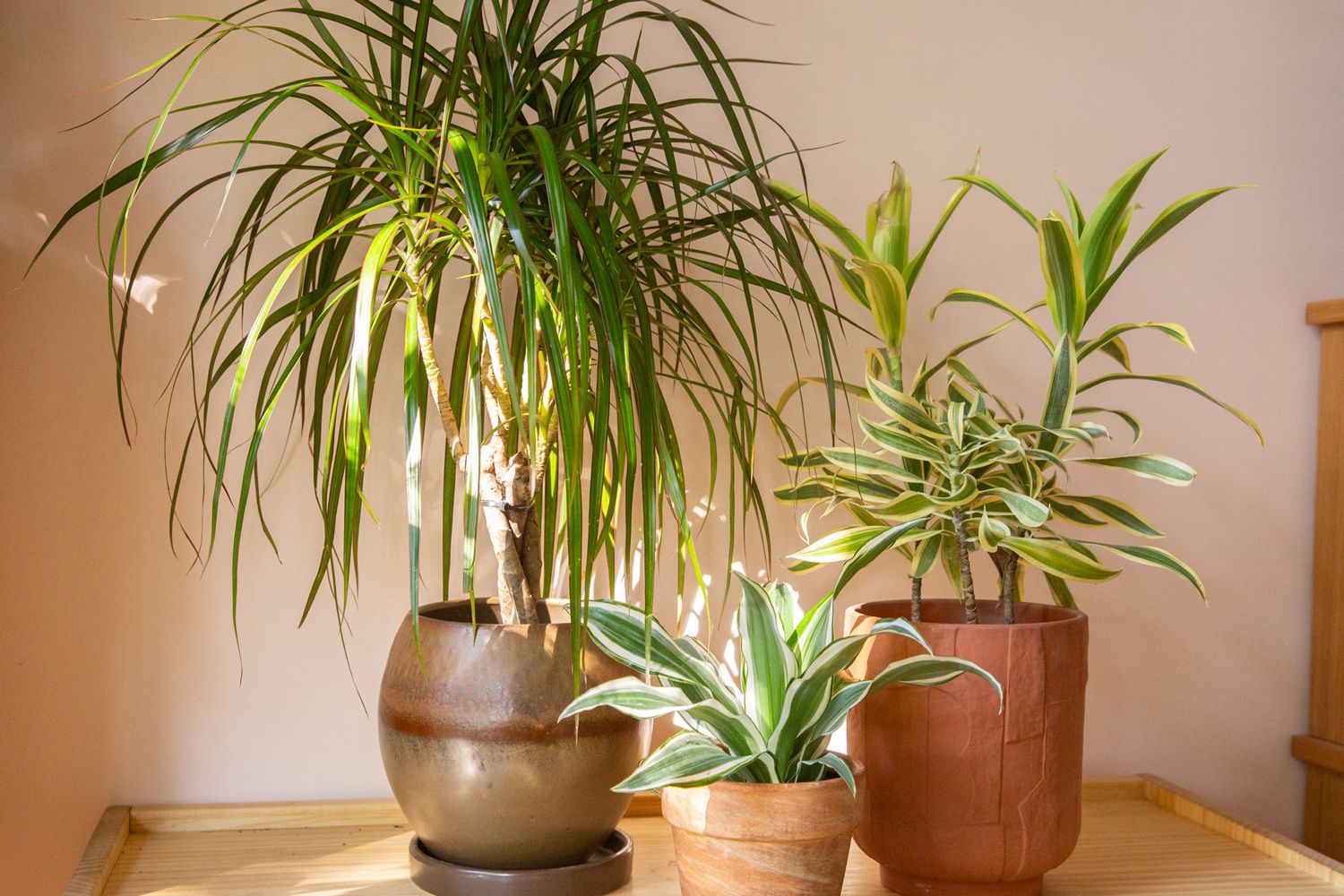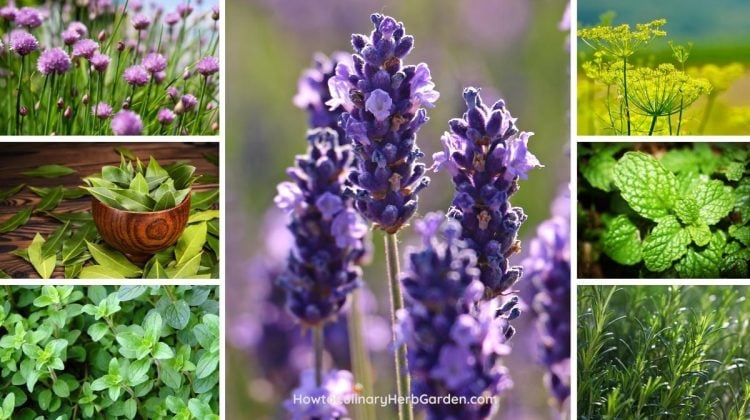28 Must-Have Tall Perennials to Add Height to Your Garden
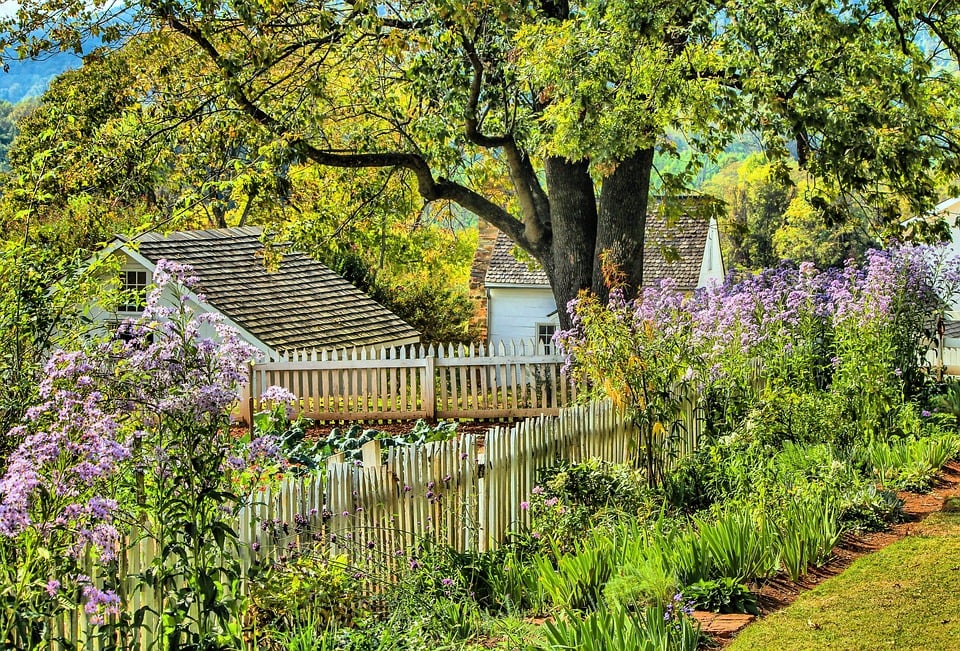
Table of Contents
Tall perennial plants serve multiple purposes other than adding beauty to your lawn. They can improve any dull and drab-looking garden island into the main centre of attraction. If you are looking for an alternative to shrubs and bushes to be grown alongside a boundary wall to enhance privacy, then these tall plants outdoors are the best options for you.
Tall is a relative term here, as the number and height of a plant depend on the size of your yard. Nevertheless, arranging, planting as well as placing these plants strategically can improve the look of your garden, add some drama, and also give some character to your garden.
The following tall plants can offer some variety to your garden and make it look picture-perfect.
1. Canna Lily
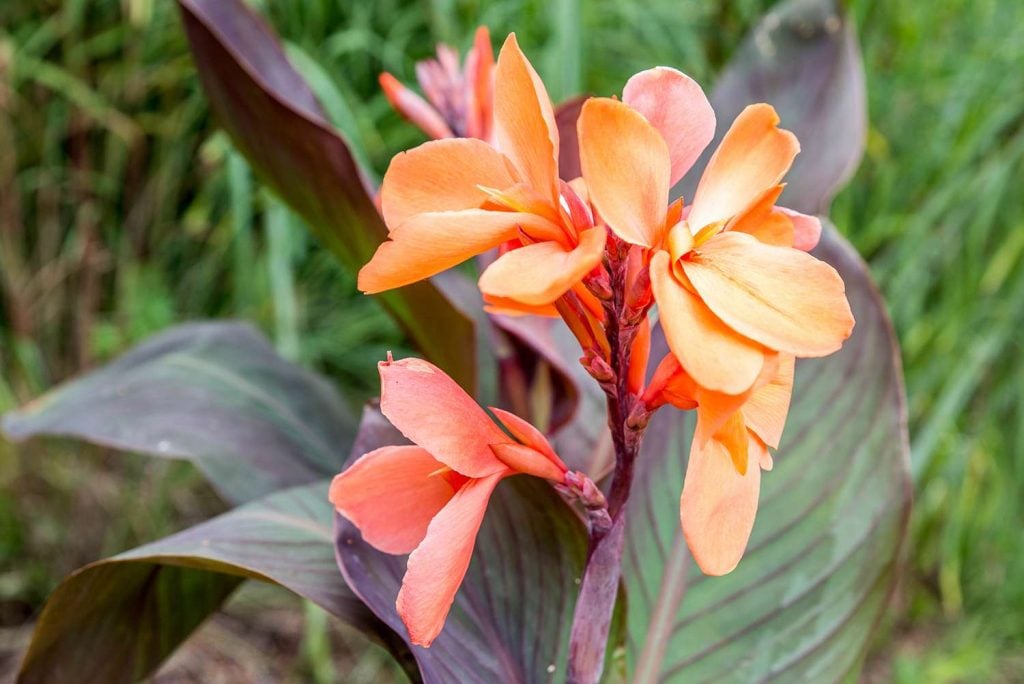
Canna lilies have dense and dramatic dark green leaves that can be used as a privacy barrier. The plant blooms in summer and can grow up to a height of eight feet. Canna lilies are upright plants that are resistant to deer, tolerate partial sunlight, and must be watered twice a week. These plants are beneficial to the human body as they are supposed to ease menstrual pains and also treat gonorrhoea and amenorrhoea. Certain varieties of canna lilies have roots that are edible.
2. Arborvitae
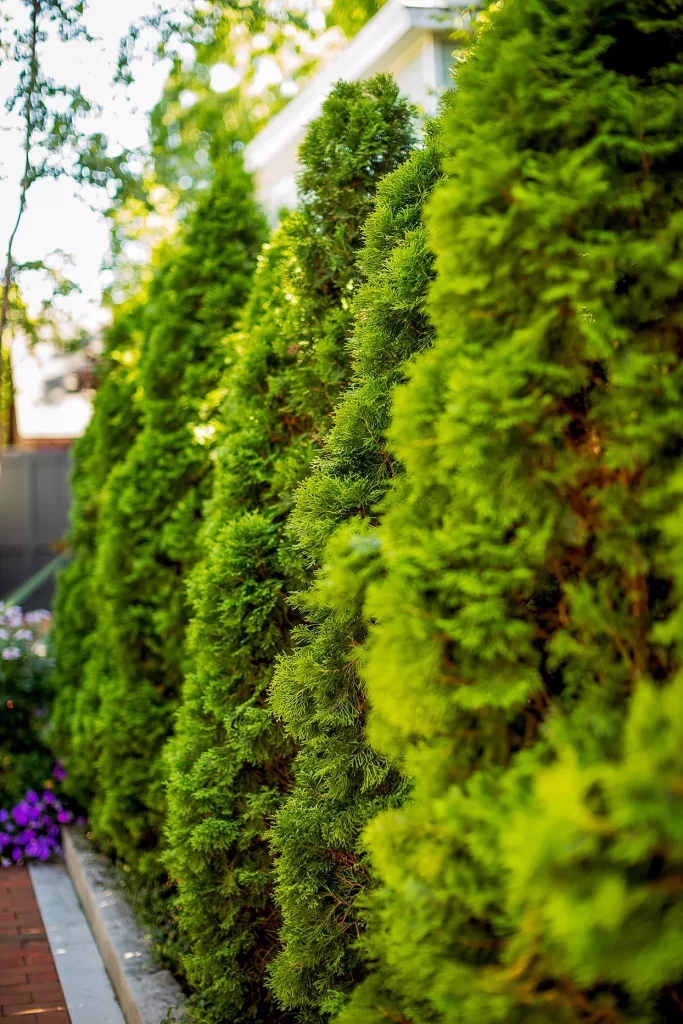
Since the arborvitae trees can reach a height of 12 feet to 15 feet, they can work as excellent barriers if grown in close proximity to each other. The dense foliage can make a striking green-coloured wall and give the landscape an exquisite appearance while improving the privacy of your house. The plants do not need much attention as they are resistant to drought and diseases. You can plant them any time between spring and fall in slightly acidic soil in a spot that receives plenty of sunlight.
3. Smoke Tree
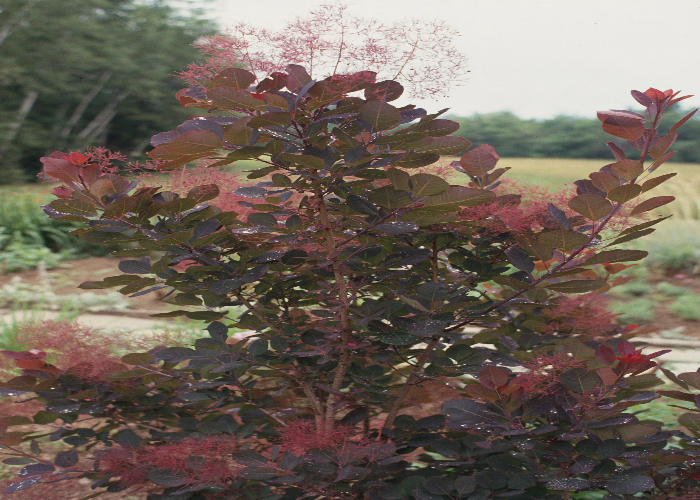
The 20 feet tall tree is beautiful, with violet-hued foliage resembling a firecracker. The low-maintenance plant is resistant to diseases, insects, deer, rodents, rabbits, racoons, and squirrels. For the best results, they need watering at least twice a week, and the sun-loving tree must be planted between fall and spring in soil that has a neutral pH level. Your garden will be interesting if you have the smoke tree there, for it attracts pollinators like bees and birds like hummingbirds, robins, sparrows and so on.
4. Delphinium
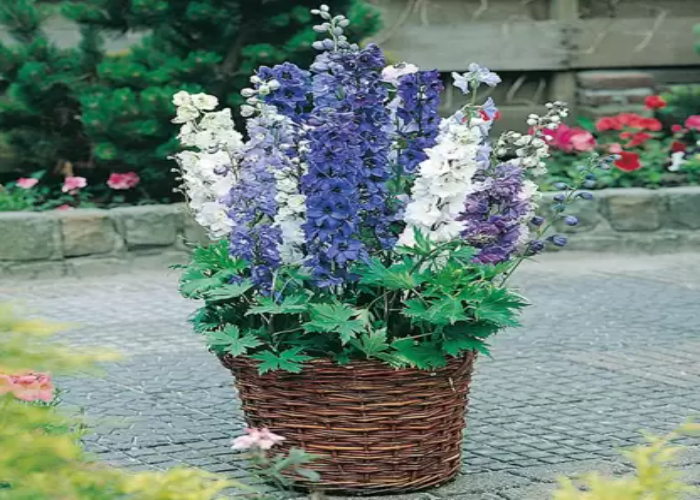
These unique plants that grow 20 to 50 inches tall are famous for their beautiful flowers blooming on their stems. For a healthy delphinium plant, the soil must be moist and slightly alkaline. The thin stems of the plants cannot withstand powerful winds; therefore, plant them in a spot accordingly. These plants bloom in various colours in the summer season and lure butterflies. They look particularly attractive in cottage gardens. However, certain varieties of these plants are toxic, so you must exercise caution.
5. Hollyhock
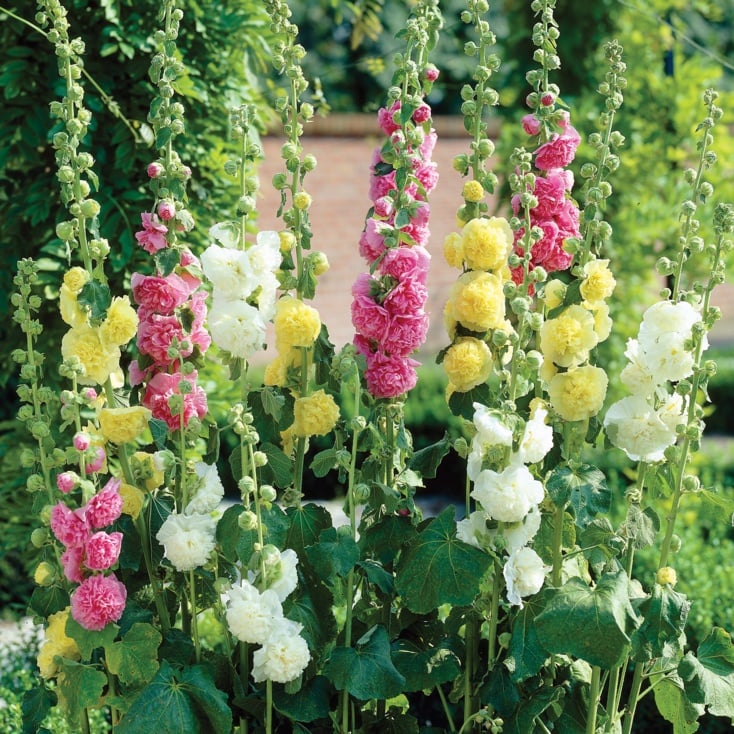
Hollyhock plants are beautiful plants that are a main attraction for hummingbirds and butterflies. Always use a hollyhock as a backdrop for short-height plants so that these tiny plants can conceal the messy-looking hollyhock stems. Since the stems are flimsy, you will have to support these plants with a fence, wall, or trellis. Since these plants are susceptible to fungal infections, avoid overwatering and plant them in a location that receives ample sunlight.
6. Joe Pye Weed
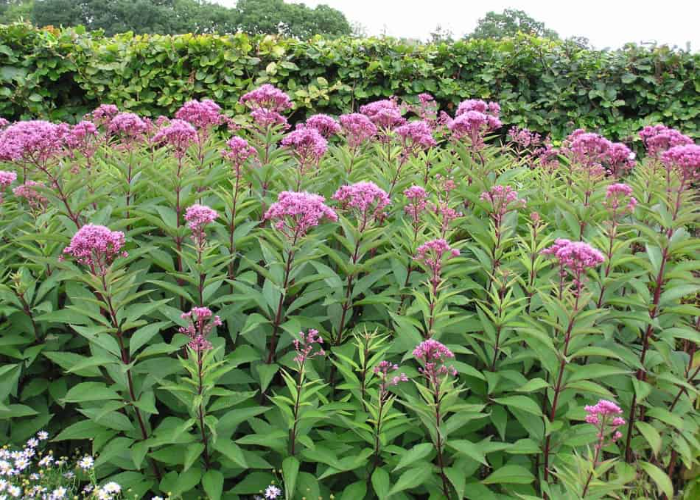
These strong, sturdy plants have elongated leaves that are dark green and serrated at the edges. The height of this plant is 7 feet, and it exudes a very sweet aroma that attracts pollinators like butterflies. Joe Pye Weed blooms beautifully in the first year and continues to grow quickly. The plant needs full Sun as well as partial sun exposure. Indigenous to North America, these plants thrive in moist soil and tend to produce better near streams and ditches. Pruning helps in the maintenance, and proper support is needed to prevent the plant from bending. Save these summer flowers from the severe heat at noon and frost during winter.
7. Baptisia or False Indigo
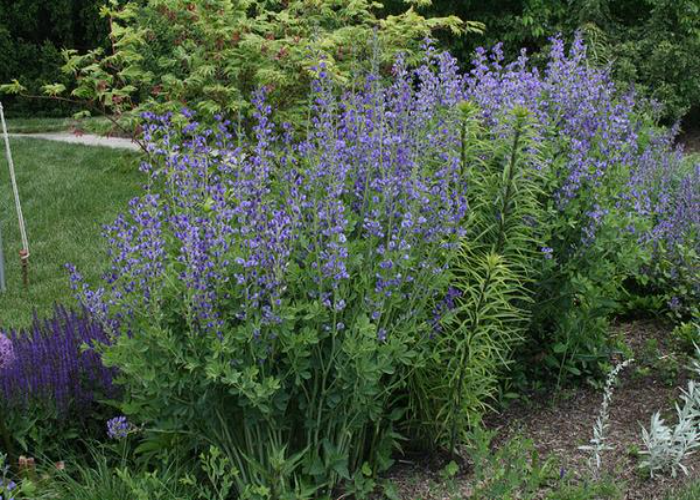
With dense clusters of deep blue flowers, Baptisia is one of the most exquisite plants to be grown in one’s backyard. Since it was used as a substitute for indigo, with which one could make a blue dye, the plant got the name False Indigo. Baptisia is one of the most useful tall outdoor plants as it has medicinal properties. The plant can treat toothaches and even provide relief from ear, nose and throat infections. It can spread in an area of 4 feet and gain the same height. The plant can grow in the same spot for decades if taken care of and starts to bloom after the third season of seed germination.
8. Buddleia or Butterfly Bush
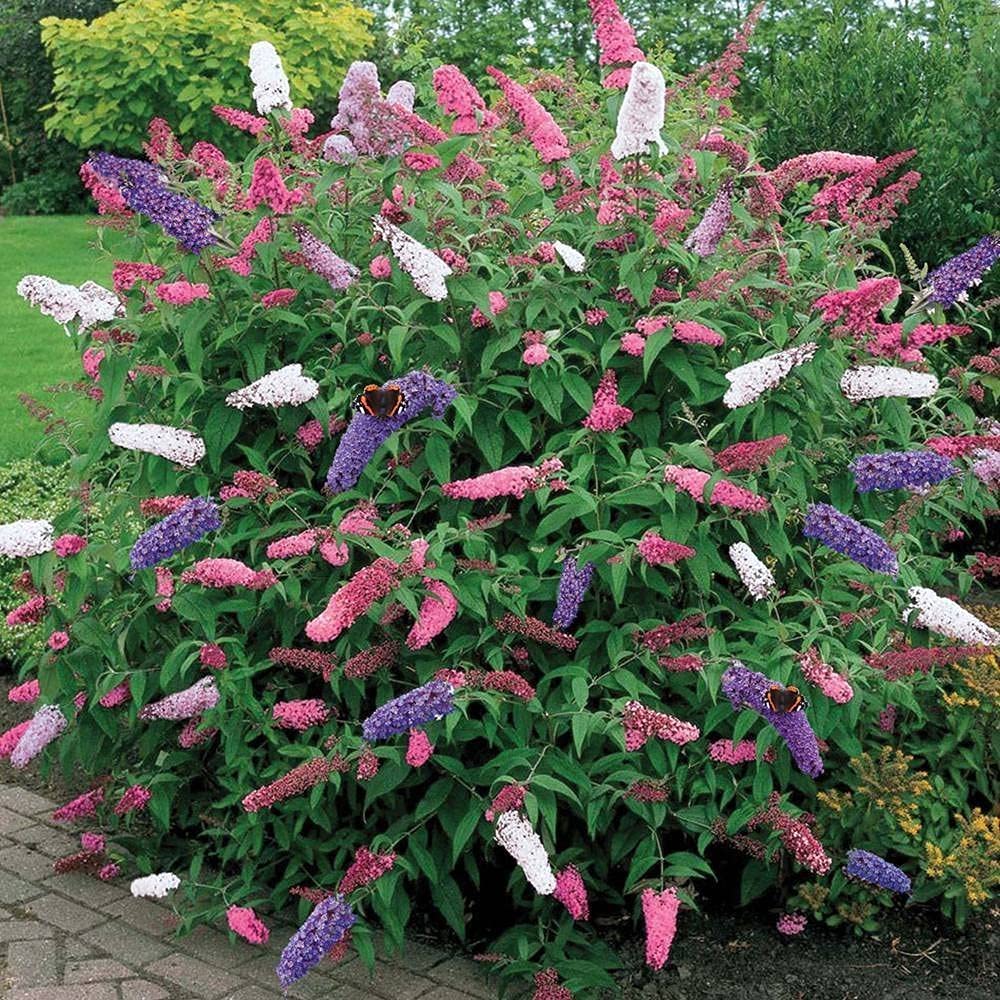
As the name suggests, the butterfly bush is a major attraction for butterflies because of its copious nectar. Other pollinators like moths and bees are also attracted to this plant due to the nectar. Also called the summer lilac and orange eye, these Asian deciduous bushes can reach 10 feet even after hard pruning. The plant requires full sun exposure and well-drained soil with a nominal acidic pH level or neutral. They are invasive because they spread through self-seeding. These plants are super strong and sturdy, for they can endure harsh climates and gusts of wind.
9. Calamagrostis or Feather Reed Grass
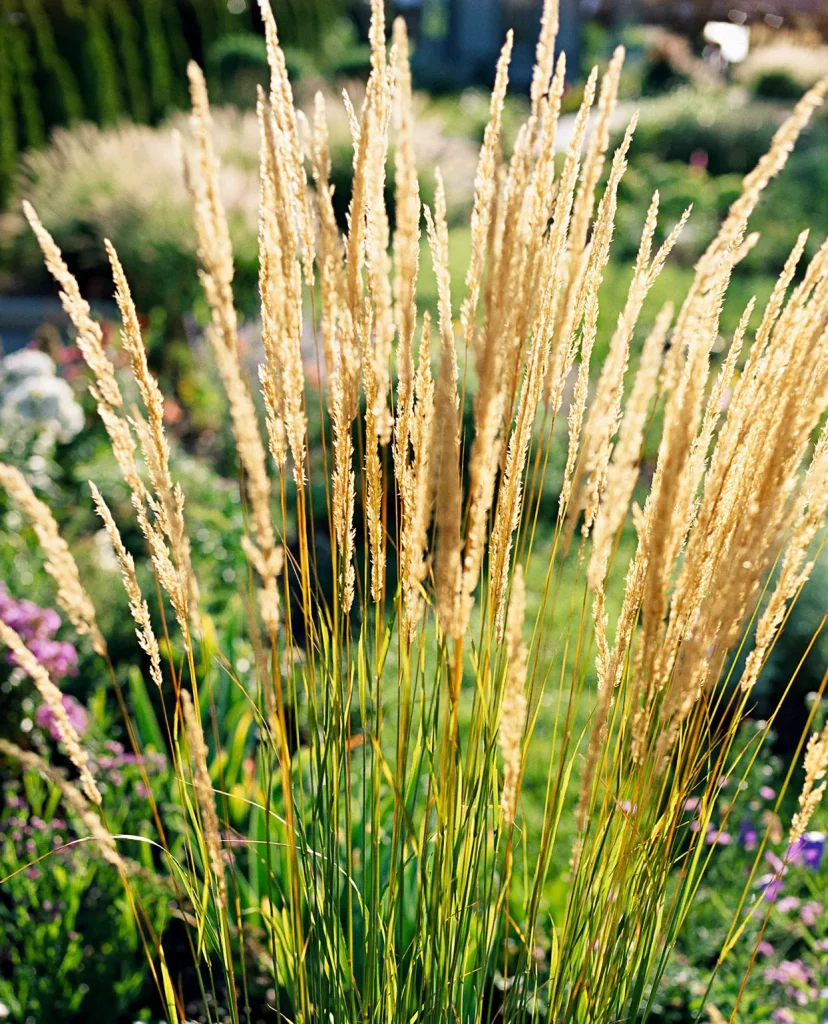
This ornamental grass can reach a majestic height of 60 inches or 5 feet. If your style is minimalistic and you want to add texture and give your lawn some graceful height, this plant is the perfect option. If paired with New Zealand wind grass, the dull green hue of the leaves of Calamagrostis will give your yard a modern and chic appearance. It can thrive in dry soil and needs to be watered only when the soil feels dry to the fingers. Since this grass, in particular, is resistant to pests and diseases, it is very easy to maintain and makes it a perfect choice for urban gardens.
10. Bush Clematis
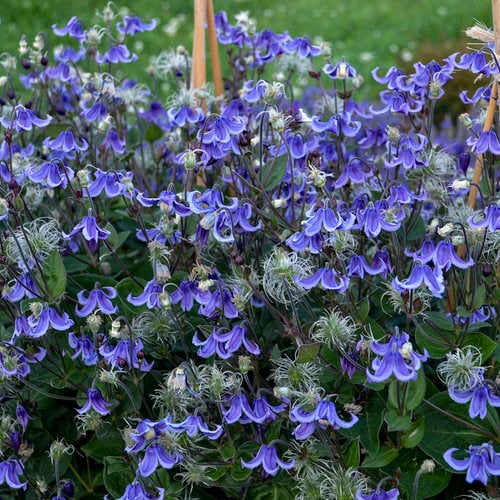
The Bush Clematis is a deciduous plant that can grow six feet high and four feet wide. If you do not want the bush to sprawl on the ground, you can use a trellis or an arbour. The plant needs an appropriate amount of sunlight but some shade when the Sun is super bright at noon. Make sure that the shrubby woody bush grows in soil mixed with plenty of organic matter for proper growth as the bush blooms with aromatic star-shaped flowers that produce silky heads. The plant is native to Europe, Russia and China.
11. Eucomis or Pineapple Lily
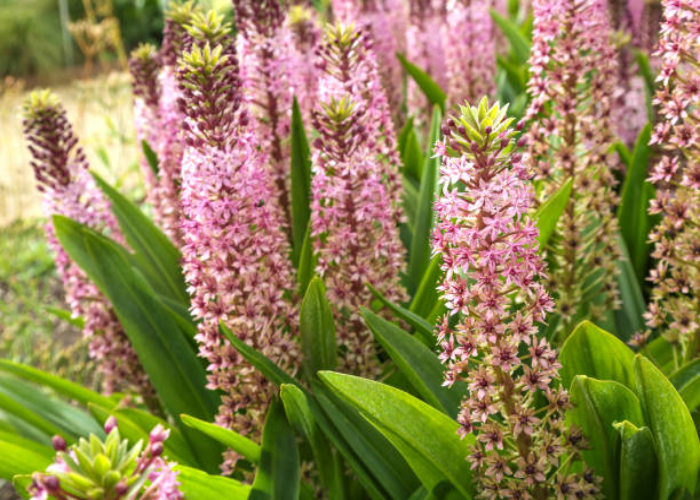
One of the most exquisite plants to exist, a eucomis is a plant that comprises a cluster of small flowers which bears a close resemblance to a pineapple. With the help of proper sunlight and some shade, the pineapple lily can blossom from July to September. At first, it blooms as a rosette and then into a pineapple lily. Such tall plants outdoors look best in lawns of big residential houses instead of small balconies or a yard of a townhouse.
12. Bird of Paradise
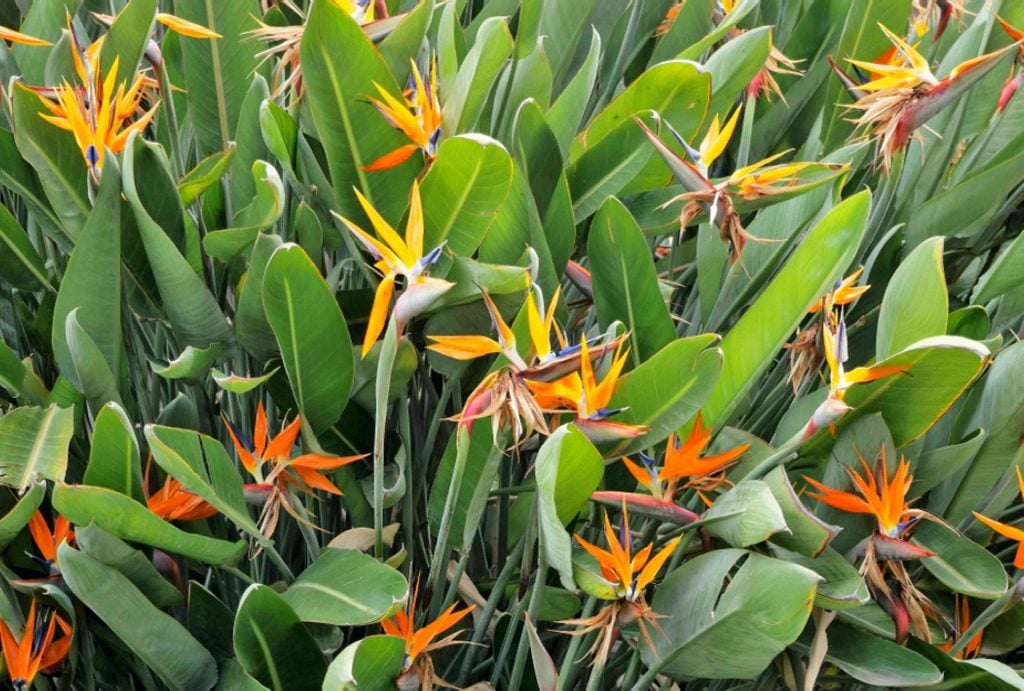
The indigenous South African decorative flower can elevate any dull corner of your garden with its extremely attractive bloom and foliage, which has a tropical appearance. Also called the crane flower can stretch up to six feet tall and spread as far as five feet. The orange and blue colour of the flower, in contrast with the green and silver colour of the leaves, attracts everyone’s attention. To plant Bird of Paradise, dig a hole that is at a distance of six feet from the rest of the plants and is twice as big as the root ball so that the roots have enough space to flourish.
13. Kniphofia or Red Hot Poker
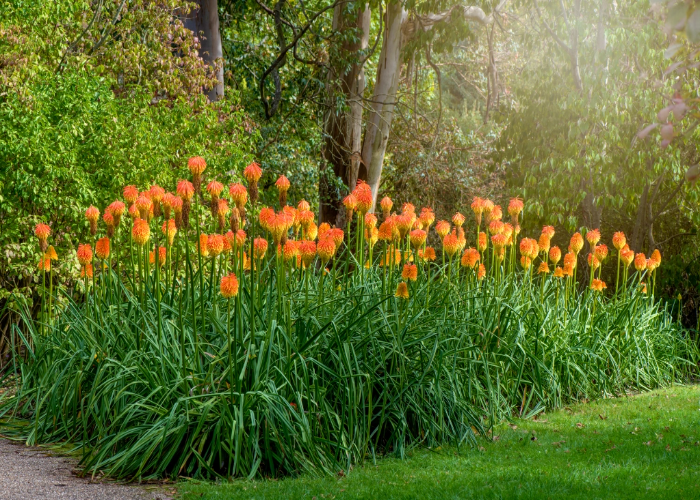
To add some drama to your beautifully manicured lawn, the red hot poker plant is the perfect option. Also termed torch lilies, grow these plants in a sunny spot in your garden as they tolerate severe heat and bloom throughout the summer season. The indigenous South African plant can grow up to four and a half feet or five feet tall in dry and partially acidic soil. Hummingbirds, butterflies, and bees are attracted to these plants, but help in keeping rabbits and deer at bay.
14. Ligularia or Bigleaf Ligularia
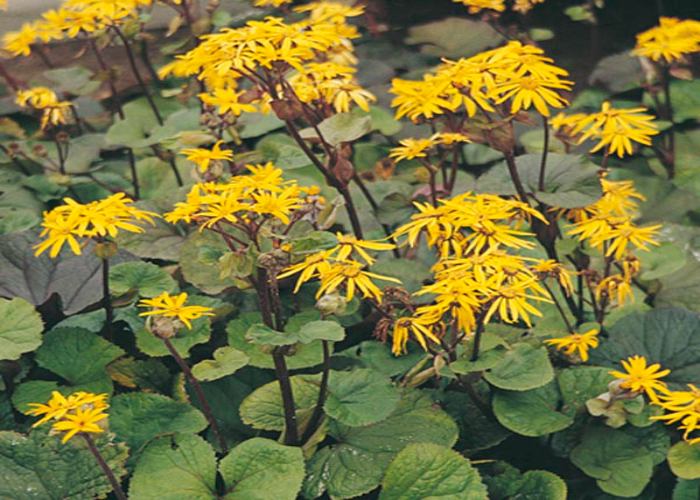
The bigleaf ligularia can reach an approximate height of eight feet or 96 inches by letting it receive plenty of sunlight while protecting it from the bright sun rays at noon. The herbaceous plant is native to Asia and Europe. However, it thrives the most in poorly watered clay soil or loam. This perennial plant stays in full bloom from summer to autumn, provided you prune the dead and damaged leaves side by side and guard them against strong summer winds.
15. Lobelia or Cardinal Flower
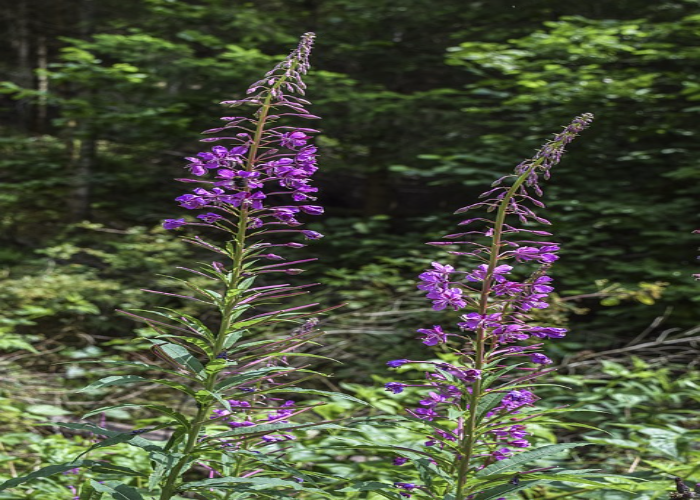
The cardinal flower is a Native American flower which can gain a height of 6 feet if you take care of it. It has an appetite for sunlight but needs shade when the sun is overhead. Consistent irrigation, regular pruning for maintenance, and preventing undesired reseeding can ensure your plant looks tidy. Such tall plants, when grown outdoors, make an excellent choice for borders. They grow best in moist soil and flourish the most in bogs and rain gardens.
16. Tall Garden Phlox
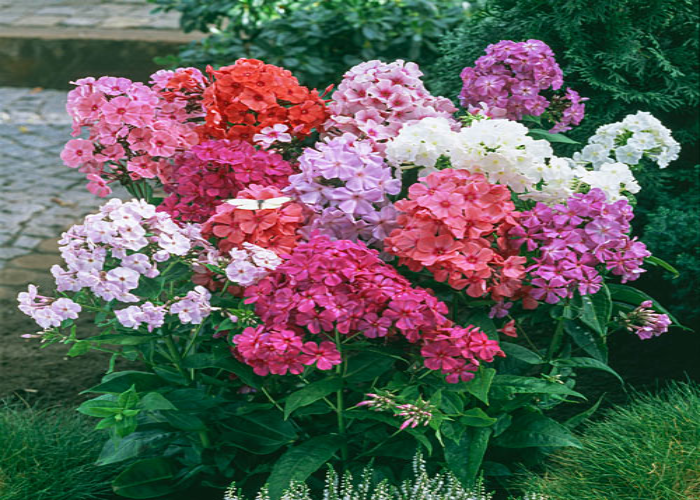
The Tall Garden Phlox, also called the summer phlox, can grow up to seven feet. The plant has gained immense popularity among florists because of the enormous flower clusters atop the stalks. The flowers blossom from midsummer until late summer and need plenty of sunlight to grow beautifully. The plant needs attention and care as it is susceptible to powdery mildew, which can be prevented if the seeds are sown far apart to ensure proper air circulation. With the right fertiliser being sprayed during planting and just before the blooms open, you can make your garden look aesthetically appealing since the floral clusters are bright.
17. Sweet Peas
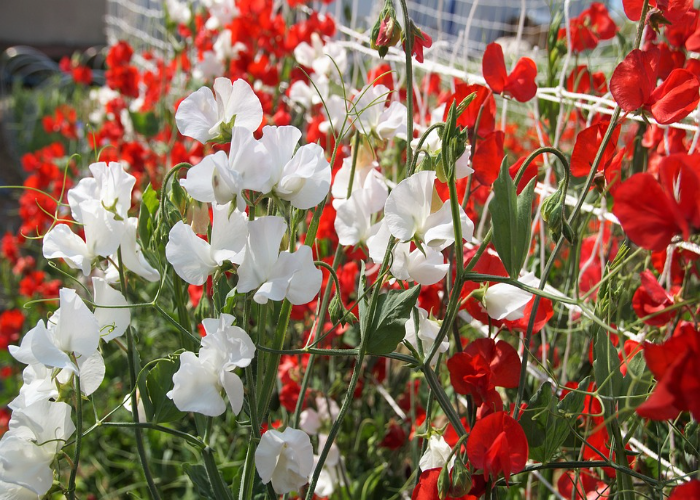
If you want your garden to look beautiful and have a beautiful fragrance that satisfies your olfactory senses instantly, then make it a point to grow sweet peas. Since they have a very flimsy stem, they need a vertical support system. For the flowers to blossom, irrigate the plants thoroughly and remove any dead leaves or branches instantly to prevent infection. For thick and dense foliage, you can mix tomato feed or comfrey feed in the soil and even mix some cow manure or leaf mould in it. If you wish to grow this plant in pots, select the dwarf variety and make sure that they enjoy plenty of sunlight so that they can flower prolifically.
18. Veronica or Spike Speedwell
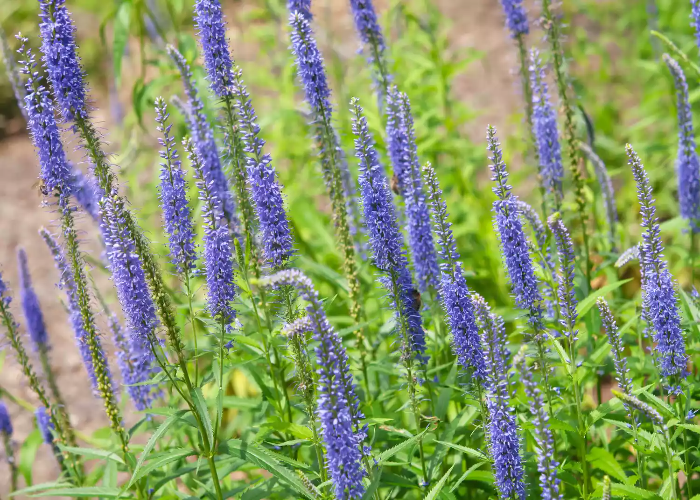
A Veronica plant can gain a height of 4 feet if grown in moist, soft soil with a neutral pH and when exposed to proper sunlight. The blue or sometimes violet-coloured flowers on the stalks emerge from dense tufts of blossoms to form conical racemes, which have multiple star-shaped flowers. Many florists are of the opinion that it looks best if, in the background, there are neutral beige-coloured plants so that the colour of these plants can pop and make the space look alive. Make your garden buzz with these flowers, as they are a major attraction for pollinators like honey bees and butterflies.
19. Cherie Hibiscus
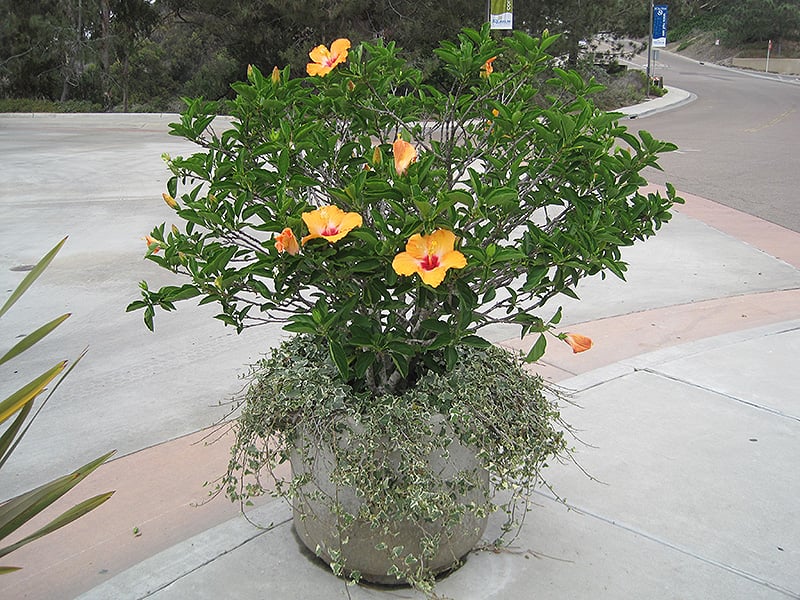
If you want to grow a plant that is big enough to serve the purpose of a hedge screen, then Cherie hibiscus is the right option. Since the plant can spread in an area of three to four feet and grow up to 6 feet in height, it can even be grown as a background plant. The flowers are yellow with salmon undertones which looks stunning with the dark green colour of the foliage. Such tall plants outdoors give a very tropical vibe to the garden. The Cherie hibiscus is a favourite of pollinators like bees, butterflies, and hummingbirds, thrives in humid weather, and needs to be planted in moist and sufficiently watered soil.
20. Itoh Peony

These hybrid peonies are a cross between herbaceous peonies and tree peonies. They are available in bright colours like yellow, red, pink and white, so growing them against a blank white wall can make your house look stunning. The blooms and foliage can last for months if grown in slightly acidic, well-drained soil and provided with full exposure to sunlight. These plants do not demand much care. Although the foliage appears quite fast, the blooms take their own sweet time, for you will get to see them after three to four years of sowing. However, you might have to be careful with your pets as these slow-maturing plants could be toxic.
21. Banana
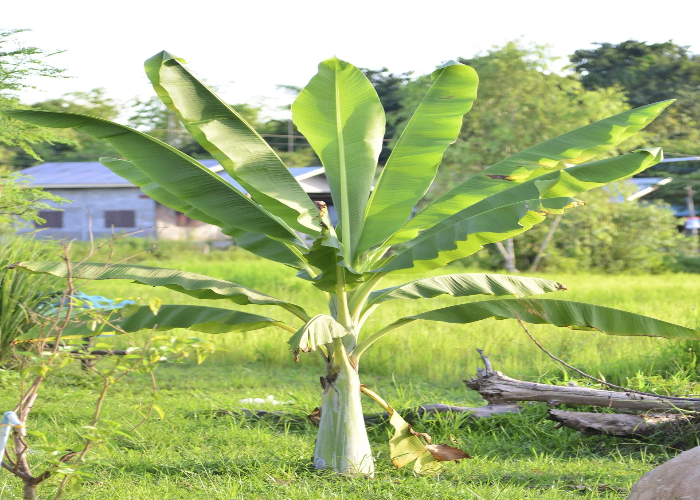
You will be doing yourself a favour if you cultivate bananas in your backyard, as they are a great source of vitamin B6. Consumption of bananas by a pregnant mother can lead to the appropriate brain development of a foetus and even improvement of metabolism. Bananas need 6 hours of continuous sunlight and well-irrigated moist soil with a potting mix that has low salt content that is slightly acidic so that they can grow from twenty feet to forty feet in merely nine months. However, the leaves can turn brown and dry if exposed to sunlight for a long duration. Therefore, it is ideal to expose it to indirect sunlight so that it can adapt to the new environment and not experience environmental shock.
22. Foxglove
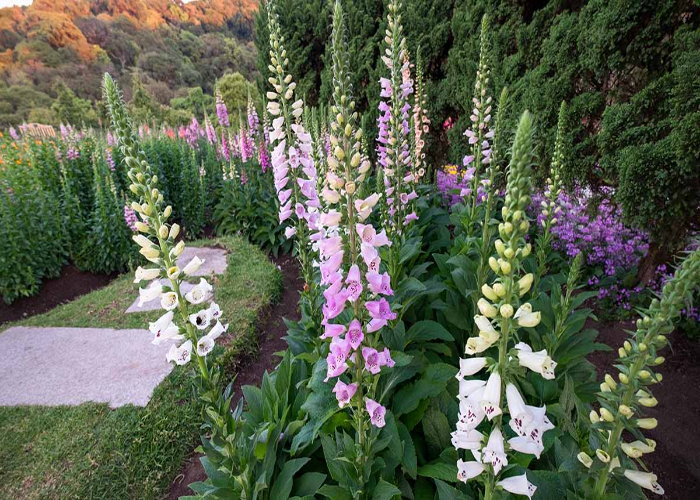
The plant is named so because the finger-shaped blossoms resemble the fingers of a gloved hand. The tubular-shaped flowers grow at a fast pace if grown in moist soil and can reach a height of 5 feet in the second season if the external factors are taken care of. These slender funnel-shaped plants bloom in pink, white, and purple colours and bear purple spots along the throat. However, plant these herbaceous perennial plants carefully, i.e., away from the reach of your pets, as they can be poisonous to humans and animals if consumed.
23. Elephant Ears
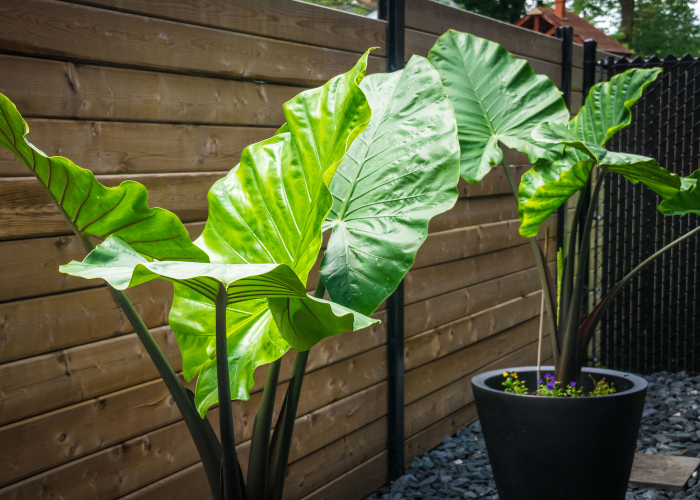
The plant gets its name from the beautiful foliage. The leaves of the plants are two-foot-wide in size and have a beautiful web of pink veins that resemble the ear of an elephant. Although the plant needs some sunlight during the day, a little shade during mid-day is a must to give it some respite from the heat. These four-foot tall plants can be grown in pots and perk up any dull corner of your verandah. While the plant with a lighter shade of green can tolerate severe sun exposure and stagnant water, the one with a darker hue needs filtered sunlight exposure and must be watered moderately. For best results, do not sprinkle water on leaves, but water the plants consistently in the morning so that the plant is dry by nightfall.
24. Windmill Palm
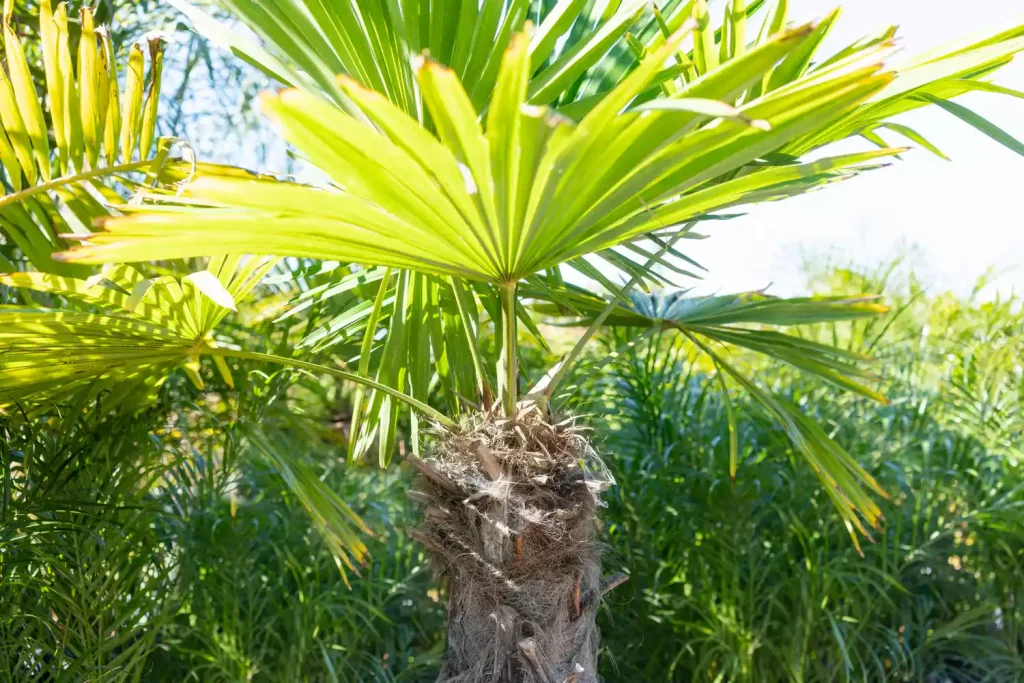
The best part of growing windmill palm, also called Chinese or the Chusan palm is that it is extremely robust. The plant can withstand bright sunlight in the summer and temperatures as low as 0°C. To give your house a regal appearance, plant a row of these palm trees along your driveway leading to your main door or the entrance to your mansion. Since the plants are resistant to drought, they do not require much maintenance once the roots get strong. The palms can also be grown alongside the boundary wall of a house and be used to enhance privacy.
25. Swiss Cheese Plant
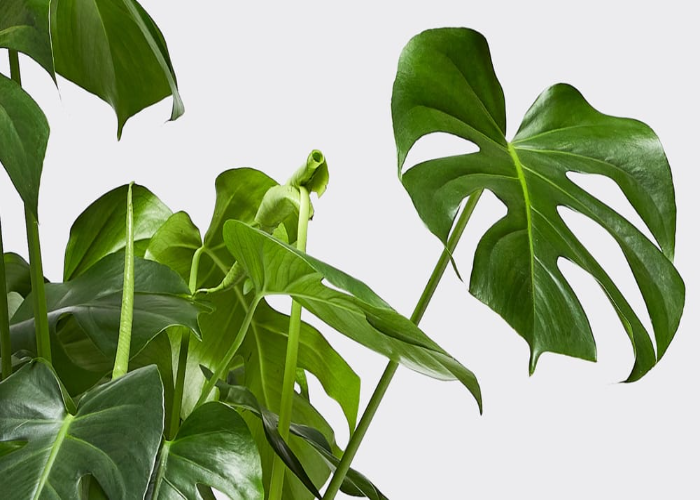
To see this five-foot-tall split-leaf philodendron plant bloom beautifully, expose this plant to indirect but bright sunlight. Water the plant when the soil loses its moisture completely, and the temperature outdoors is more than 15°C but less than 30°C. To maintain this ornamental plant, wipe the surface of the leaves with a clean cloth regularly and mist them occasionally to give them a chic look.
26. Giant Pothos
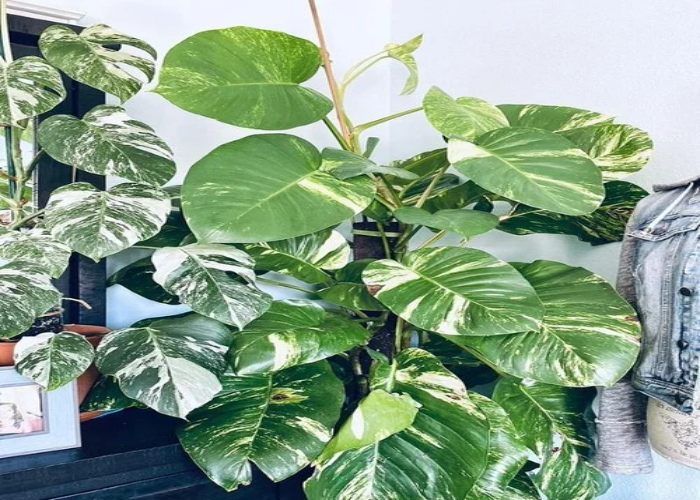
The Giant Pothos strives in an environment that has high humidity, and the outside temperature is somewhere between 18°C and 29°C. The leaves of the plant are two feet big, and the overall height of the plant is 60 feet. This ornamental plant loves the direct bright rays of the Sun, soil that is well drained but retains moisture and needs irrigation only when the top two inches of the soil feel dry to the touch. To maintain the erect posture of the plant, use the support of a moss pole. Always remember to spray insecticide on the plant as it is vulnerable to spider mites, mealybugs, and even scale.
27. Ninebark
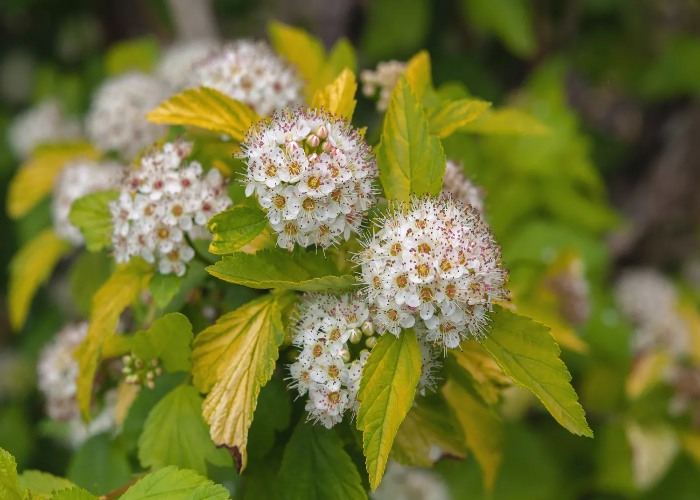
The bark is the most interesting part of the plant, other than the name. This plant has an exfoliating bark that peels off in thin layers as it ages. The plant originally belonged to the rose family. It can be grown to enhance the landscape, as a hedge, or even be cultivated along foundations in loamy soil that has a neutral pH level. The height of the plant can grow up to 10 feet, and the plant blooms best from spring till summer.
28. Sky Pencil or Japanese Holly
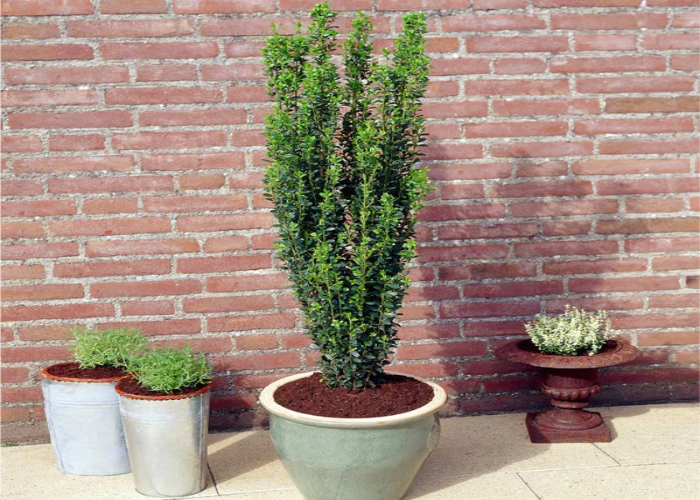
The Japanese Holly plant is a good option for those who want a partial barrier to privacy. They can grow up to 7 feet in properly irrigated, slightly acidic and hydrated soil. For proper growth, expose the plant to full sunlight or partial sunlight. Mulching can be done while germinating the seed; however, do not let it come in contact with the trunk, as that may expose your plant to pests and diseases. Make sure you water the plant generously in summer when it is hot and dry but do not saturate the pot with water as it can infect the plant with fungal infections.
Conclusion
Plants with attractive blooms, textures, and foliage, if arranged strategically, can make for a beautiful scene. By doing so, you can break the monotony of green lawns by planting flowers and trees that complement each other. A seasoned gardener will organise all the plants and pots so that the whole ensemble looks cohesive and harmonious and comes together beautifully. The size of a garden in a residential area is different, but skillfully selected plants can give these tall plants outdoors a new appearance.
Tell us in the comment box which one of these tall perennials you will plant in your garden.

